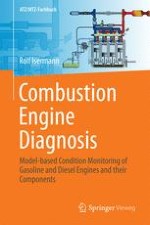2017 | Buch
Über dieses Buch
This book offers first a short introduction to advanced supervision, fault detection and diagnosis methods. It then describes model-based methods of fault detection and diagnosis for the main components of gasoline and diesel engines, such as the intake system, fuel supply, fuel injection, combustion process, turbocharger, exhaust system and exhaust gas aftertreatment. Additionally, model-based fault diagnosis of electrical motors, electric, pneumatic and hydraulic actuators and fault-tolerant systems is treated. In general series production sensors are used. It includes abundant experimental results showing the detection and diagnosis quality of implemented faults.
Written for automotive engineers in practice, it is also of interest to graduate students of mechanical and electrical engineering and computer science.
Anzeige
